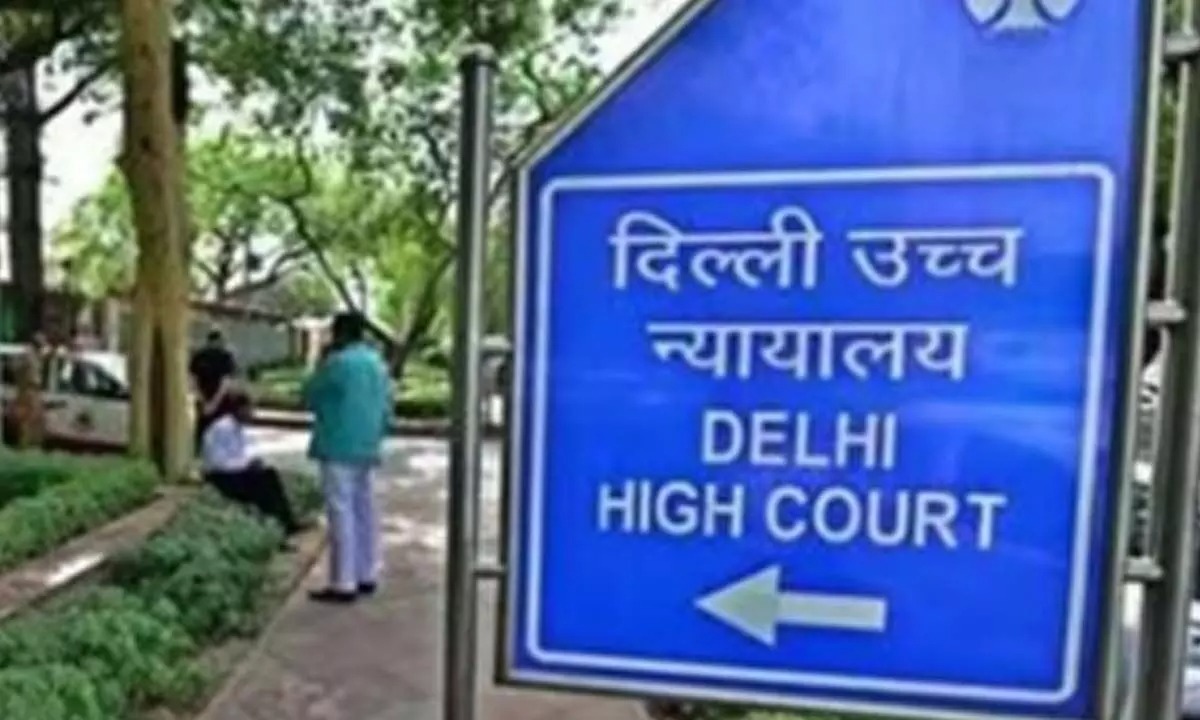A.N. Jindal, J.@mdashCharna Singh and Hakam Singh appellants-accused (herein referred as ''the accused'') were prosecuted for the offences under Sections 363 and 366-A of the Indian Penal Code, for kidnapping the prosecutrix, minor (name not mentioned), with an intention that she may be forced to commit illicit intercourse, consequently, vide judgment dated 17.05.2000, passed by Addl. Sessions Judge, Mansa, they were convicted and sentenced to undergo rigorous imprisonment for a period of three years and to pay a fine of Rs. 1,000/- each u/s 363 IPC and rigorous imprisonment for a period of four years and to pay a fine of Rs. 1,000/- each u/s 366-A IPC.
2. On 26.04.1997, Gandhi Singh and his other family members were sleeping in their courtyard. In the next morning when they woke up, they found the prosecutrix missing from their house. He initiated search in the surrounding villages and came to know that both the accused, who were also absent from the village, had enticed away his daughter. On 27.04.1997, Rattan Singh, brother of Gandhi Singh, who has been residing at Dera Sacha Saudha, Sirsa, informed, Gandhi Singh that Sukhjit Kaur was with him and he should take her back. Gandhi Singh took her back but did not lodge the report due to the fear of the society. Ultimately, with the intervention of the relatives, he got recorded his statement before Sub Inspector Rattan Singh on 18.07.1997 on the basis of which FIR EX.PA/2 was registered. Prosecutrix disclosed before the police that when she woke up to go for answering the call of nature, she came across accused Charna Singh and Hukam Singh in the lane, who threatened to kill her if she did not follow them and they took her in a bus towards Sirsa. While sitting in the bus, they were further talking to sell her and if they could not sell her then they will compel her to indulge into prostitution and earn out of that. She did not raise any alarm out of fear. Thereafter, they took her to Dera Sacha Sauda at Sirsa. After two days, they spotted Rattan Singh at the Dera. On seeing Rattan Singh, the accused ran away.
3. On registration of the case, Sub Inspector Rattan Singh investigated the case, prepared the rough site plan Ex.PE and got the prosecutrix medico legally examined from Dr. R.K. Kaushal, who gave a definite opinion that she has not been raped. The accused were arrested on 25.11.1997 at Bus-Stand, Bajewala. The statements of the witnesses were recorded. On completion of investigation, a report u/s 173 Cr.P.C. was submitted against the accused.
4. Finding a prima facie case, the accused were charged u/s 363 and 366-A of the Indian Penal Code to which they pleaded not guilty and claimed trial.
5. The prosecution, in order to substantiate the charges examined Gandhi Singh complainant (PW1), prosecutrix (PW2), Manjit Kaur, mother of the prosecutrix (PW3), Dr. R.K. Kaushal, who medico legally examined the prosecutrix (PW4), ASI Lal Singh, who partly investigated the case (PW5), Rattan Singh, uncle of the prosecutrix (PW6) and Sub Inspector Rattan Singh, Investigating Officer (PW7).
6. When examined u/s 313 Cr.P.C., both the accused, while denying all the incriminating circumstances, pleaded their false implication. Accused Charna Singh explained that Gandhi Singh had a long standing litigation with his brother Inder Singh. He and Hakam Singh used to help Inder Singh, therefore, Gandhi Singh had a grudge against them. Two months prior to the occurrence, he had gone to sew the clothes for the marriage of a relative of Gandhi Singh at village Saharna for which they had to pay Rs. 1,000/- as stitching charges. Gandhi Singh took the guarantee for payment to him. When the payment was not made then he got convened a Panchayat. Gandhi Singh felt enraged and abducted him and Hakam Singh. His father also filed a criminal complaint against Gandhi Singh which was withdrawn lateron after they were released by Gandhi Singh. Prosecutrix and her mother had left the house and had gone to her parental house, however with the intervention of Ajit Singh Sarpanch, Gandhi Singh and others, they had been brought back them to Makha. He further stated that he and Hakam Singh were falsely implicated in the case. Accused Hakam Singh also made identical pleas.
7. In defence, the accused examined four witnesses. MHC Harjit Singh (DW1), stated that in the summoned record there was no affidavit dated 02.05.1997. Harbans Singh, Clerk, Office of the Tehsildar, Sardulgarh (DW2) proved the copy of the entry Ex.DA, bearing serial No. 295 dated 02.05,1997 relating to the attestation of affidavit of Gandhi Singh son of Gurdev Singh, resident of Makha, District Mansa, attested by Chand Singh, Lamberdar and identified by Gandhi Singh. Accused proved the affidavit by leading secondary evidence. Ajit Singh, Ex-Sarpanch of village Makha (DW3) identified his signatures on Ex.DB (Photocopy of the affidavit). He further stated that Gandhi Singh had informed him that the prosecutrix had gone to Dera Sacha Sauda with her uncle and she be brought back as such he alongwith Lal Singh had gone to Dera Sacha Sauda and brought her back. Chand Singh (DW4) has stated that Gandhi Singh was identified by Ajit Singh, Sarpanch, when he swore affidavit and he also identified his signatures on Ex.PB, however, he refused to disclose as to from where the prosecutrix had come to the village.
8. The trial ended in conviction.
9. Arguments heard. Record perused. Admittedly, no rape has been committed upon the prosecutrix in the present case but it is a case of abduction of a minor girl for illegal purpose, therefore, the prosecution was bound to prove, by definite evidence, if the prosecutrix was less than 18 years of age. Complainant Gandhi Singh (herein referred as ''the complainant''), while proving the age of the prosecutrix, has stated that she was 13-14 years of age at the time of incident. Similarly PW2 prosecutrix, while appearing in the witness box, has given her age as 13-14 years. That a part Manjit Kaur, mother of the prosecutrix (PW3), has also categorically stated that she was only 13-14 years old. Prosecutrix has admitted that she never went to school, thus, we are to choose either out of the medical evidence and the ocular version. The medical opinion regarding age is not certainly better than the ocular evidence. As regards the ocular version, both the parties, who were the best witnesses to disclose about the age of the prosecutrix, have consistently stated that she was not more than 18 years of age. Even Dr. R.K. Kaushal (PW4) has stated that when he medically examined the prosecutrix, she appeared to be 14 years of age. There is no rebuttal to the contrary.
10. It is further noticed that the documentary evidence is the best evidence to prove the age but in the absence of the documentary evidence, the evidence of the persons, who had special means of knowledge, could be taken into consideration and placed reliance. As such, in the absence of any other evidence to the contrary, the testimonies of Gandhi Singh and Manjit Kaur deserves to be placed reliance. Thus, in such circumstances, prosecutrix can be said to be less than 18 years of age.
11. As regards the offence u/s 366-A of the Indian Penal Code, the following three principal ingredients of the offence are required to be proved are:
(1) that a minor girl below the age of 18 years is induced by the accused;
(2) that she is induced to go from any place to do any act, and
(3) that she is so induced with intent that she may be or knowing that it is likely that she will be forced or seduced to illicit intercourse with another person.
12. It may be reiterated here that, as proved by the prosecution, the prosecutrix was less than 18 years of age and she was in the custody of her lawful guardian when she was induced to be taken away. For constituting the offence punishable u/s 366-A IPC, it is not necessary that prosecution should prove that actually sexual intercourse was committed by the accused with the prosecutrix but mere inducement with an intent to commit sexual intercourse by some other person is sufficient to prove the said offence. Actual commission of the sexual intercourse is not essential to bring the case within the purview of the said Section. The intention could be gathered not only by direct evidence but also from the circumstances of the case. Here the prosecutrix has comeforth to tear out her abdomen stating that the accused forcibly took her away and they wanted to sell her to some other person and to induce her to do the business of prostitution. Manjit Kaur (PW3) and Rattan Singh (PW6) are the witnesses to the recovery of the prosecutrix. In any case, it would be an insult to doubt the testimony of prosecutrix, who while sacrificing her modesty, fame and honour, had the courage to depose about the highhandedness of the accused. The occurrence took place on 26.04.1997 and the prosecutrix was recovered after three days. She has explained that she did not raise any hue and cry out of fear. She has also stated that the accused has been threatening that if she did not accompany them then she would be killed, thus, her silence on account of the aforesaid reason cannot be read to mean that the prosecutrix was unusual in her conduct. Even otherwise, different persons react differently in different situations. No set reaction from different persons in different situations and even in the given situation can be expected.
13. The other limb of argument that affidavit Ex.DB alleged to have been sworn by the complainant contains different version, sans any merit. The said affidavit cannot be said to be a previous statement. Even otherwise, the said affidavit was not put to the complainant when he stepped into the witness box. Therefore, no benefit could be derived from the said affidavit and the same is hardly sufficient to belie the prosecution version.
14. Having scrutinized the impugned judgment, the same is well founded and well reasoned. The accused enticed away a minor girl from the guardianship, with an intention that she may be sold or compelled to indulge in the prostitution. As such the offences against the accused stand established.
15. For the aforesaid reasons, finding no merit in the appeal, the same is dismissed.
16. Amicus Curiae may claim remuneration from the competent authority as per rules.

